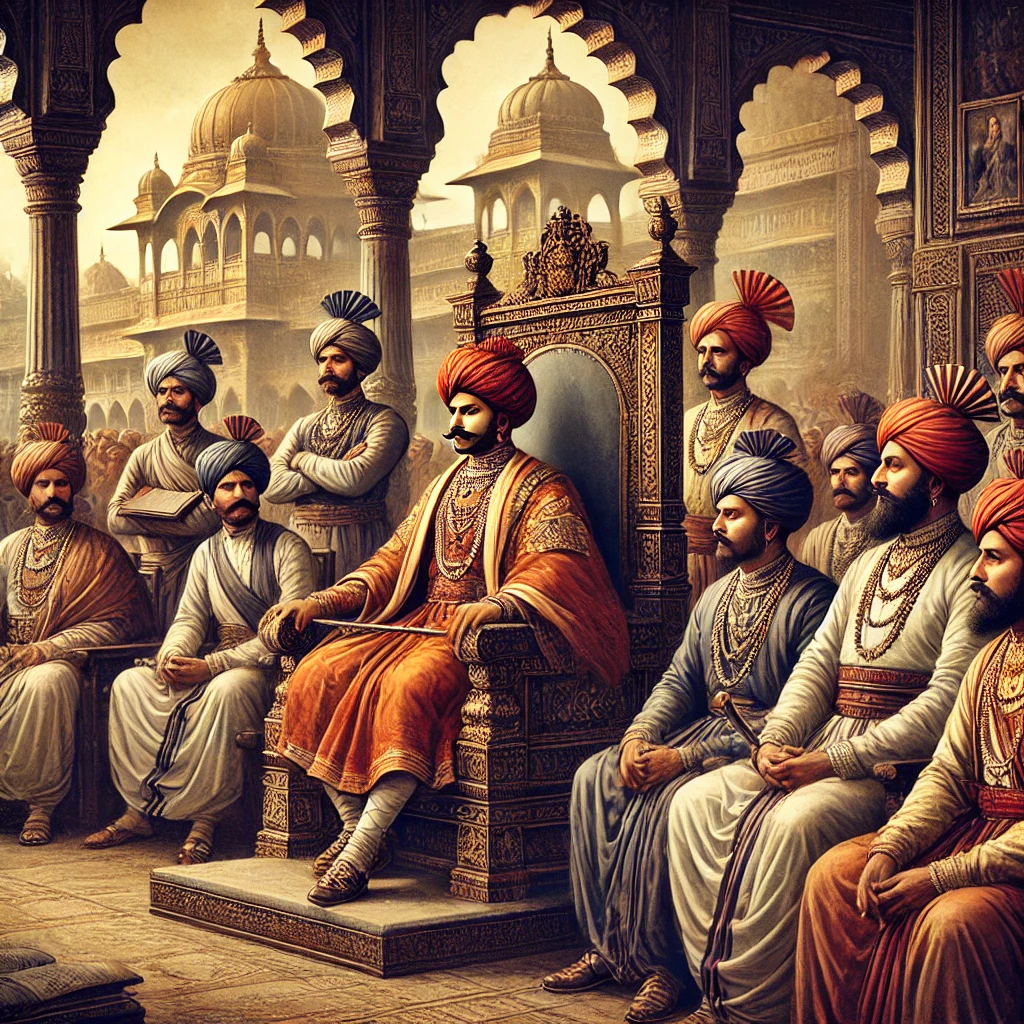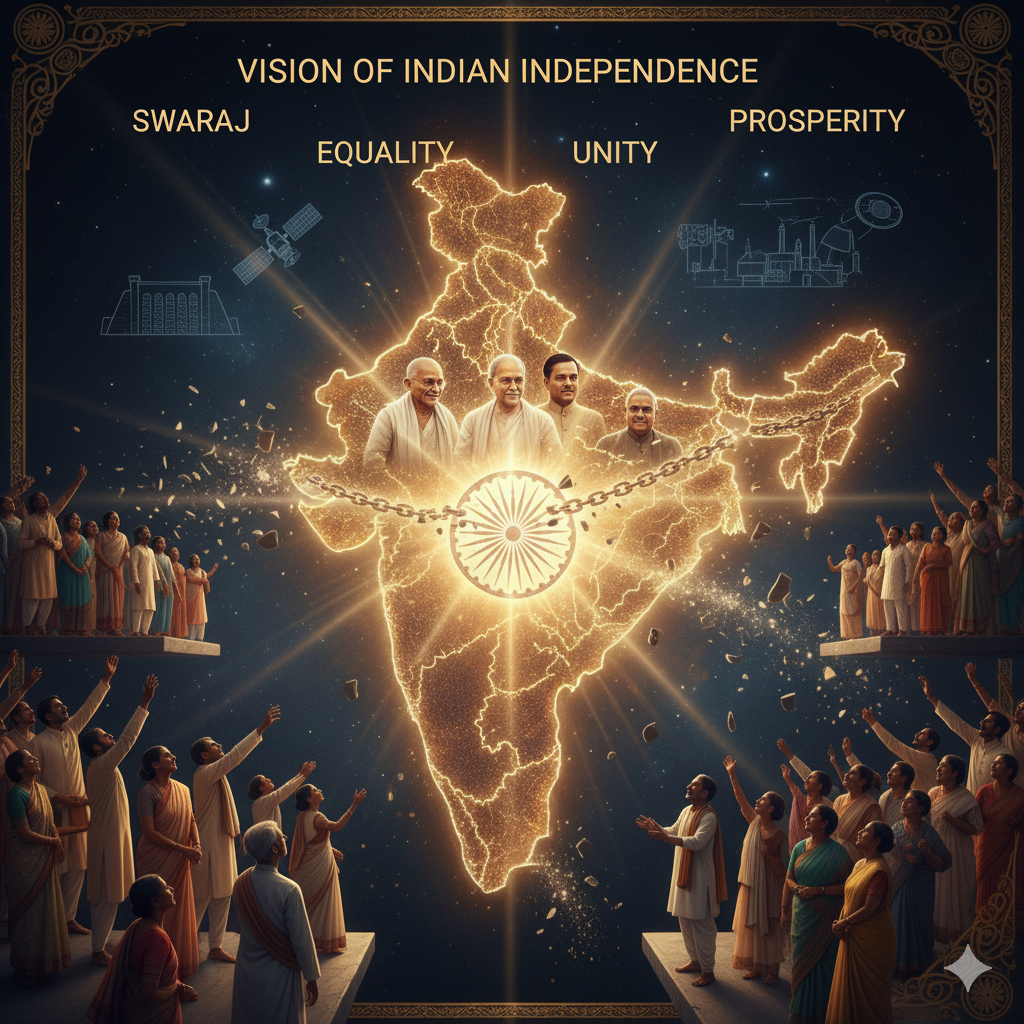The Maratha Empire was one of the most powerful forces in Indian history, and for nearly a century, it was governed by the Peshwas. Originally, the Peshwas were the prime ministers of the Maratha kings, but over time, they took full control of the administration. From 1713 to 1818, the Peshwas not only strengthened the Maratha Empire but also expanded its influence across India. However, internal conflicts, the defeat at Panipat, and British diplomatic tactics ultimately led to their downfall. This article provides an in-depth analysis of the Peshwa era, highlighting their rule, achievements, wars, treaties, and the eventual decline of the Maratha Empire.
1. Balaji Vishwanath (1713-1720): The Foundation of Peshwai
Introduction and Rule
Balaji Vishwanath was the first Peshwa of the Maratha Empire, appointed by Chhatrapati Shahu in 1713. He was a skilled administrator and diplomat who laid the administrative foundation of the empire.
Major Achievements
- Played a crucial role in securing the Maratha throne for Shahu.
- Negotiated a treaty with the Mughals in 1719, granting the Marathas the right to collect Chauth (25% tax) and Sardeshmukhi (10% tax).
- Established Maratha influence in Delhi’s politics.
Important Battles and Treaties
- 1719: Delhi Expedition – Secured an agreement with Mughal Emperor Farrukhsiyar, allowing Marathas to collect taxes.
- Campaign Against the Nizam – Forced the Nizam to acknowledge Maratha authority.
2. Baji Rao I (1720-1740): The Golden Age of Maratha Power
Introduction and Rule
Baji Rao I is regarded as one of the greatest Maratha warriors. He fought 41 battles in his lifetime and never lost a single one. He was a master of cavalry warfare and followed the policy of “Delhi Chalo” (March to Delhi).
Major Achievements
- Expanded Maratha influence in North India.
- Strengthened the Maratha army and brought several regions under their control.
- Established Pune as the center of Maratha administration.
Important Battles and Treaties
- 1728: Battle of Palkhed – Defeated the Nizam and forced him to accept Maratha supremacy.
- 1737: Delhi Campaign – Weakened the Mughal Empire by attacking its capital.
- 1738: Treaty of Bhopal – Mughals ceded Malwa to the Marathas.
3. Balaji Baji Rao (1740-1761): Peak of the Empire and the Defeat at Panipat
Introduction and Rule
Balaji Baji Rao, also known as Nana Saheb, was as ambitious as his father. Under his leadership, the Maratha Empire reached its peak, but the disastrous defeat in the Third Battle of Panipat (1761) severely weakened their power.
Major Achievements
- Expanded Maratha influence to Bengal, Odisha, and Punjab.
- Signed a treaty with the British in 1751, strengthening the Maratha position in western India.
- In 1758, Marathas captured Punjab from the Afghans.
Important Battles and Treaties
- 1761: Third Battle of Panipat – Devastating loss against Ahmad Shah Abdali, leading to massive casualties for the Marathas.
- 1761: Treaties – Marathas lost control over North India and had to regroup.
4. Madhav Rao I (1761-1772): Attempts at Revival
Introduction and Rule
After the defeat at Panipat, the Maratha Empire was in a weakened state, but Madhav Rao I made efforts to rebuild and strengthen it.
Major Achievements
- Reorganized administration and military.
- Reclaimed lost territories.
- Maintained Maratha dominance despite conflicts with the Nizam and the British.
Important Battles and Treaties
- 1763: War Against the Nizam – Marathas secured a decisive victory.
- Beginning of Conflicts with the British – Marked the start of the power struggle between the Marathas and the British East India Company.
5. Baji Rao II (1796-1818): The End of Peshwai
Introduction and Rule
Baji Rao II was the last Peshwa of the Maratha Empire. He signed the Treaty of Bassein (1802) with the British, effectively bringing the Marathas under British influence.
Major Achievements and Challenges
- Failed to counter the growing influence of the British.
- Increasing power struggles among Maratha chiefs (Sindhia, Holkar, Gaekwad) weakened the empire.
Important Battles and Treaties
- 1802: Treaty of Bassein – Marathas sought military assistance from the British, leading to their subjugation.
- 1817-1818: Third Anglo-Maratha War – Marathas suffered a final defeat, leading to the end of Peshwai.
Division and Decline of the Maratha Empire
Major Reasons for Decline
- Internal Conflicts – Power struggles among Maratha chiefs like the Sindhias, Holkars, and Gaekwads weakened the empire.
- British Diplomacy – The British East India Company exploited these internal rivalries and gradually weakened Maratha dominance.
- Third Battle of Panipat (1761) – The massive defeat against Ahmad Shah Abdali resulted in severe losses and shattered Maratha ambitions in North India.
1818: The End of the Maratha Empire
In 1818, the British decisively defeated Peshwa Bajirao II, bringing an end to the Peshwa rule. With this, the Maratha Empire officially collapsed, and the British established full control over India.
Conclusion
The Maratha Peshwas played a significant role in shaping Indian history. After the decline of the Mughal Empire, the Marathas emerged as the dominant force in India. However, due to internal conflicts, the disastrous defeat at Panipat, and British political strategies, the Maratha power gradually diminished. By 1818, the British abolished the Peshwa rule and took complete control over India, marking the end of the Maratha Empire.




